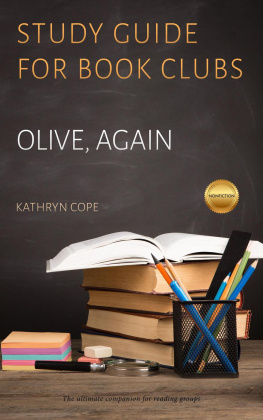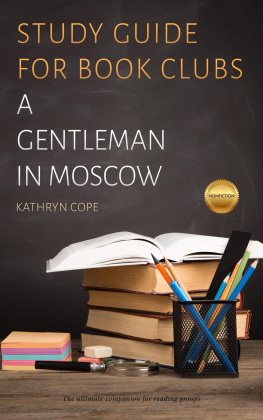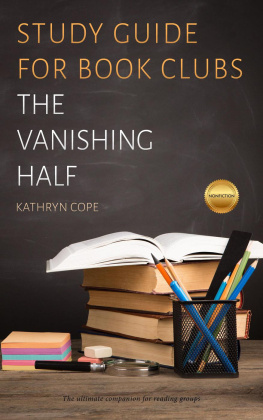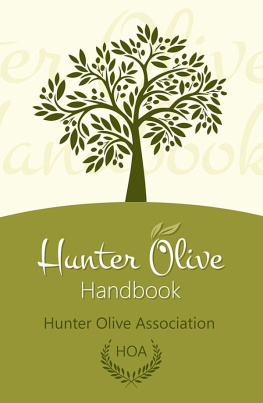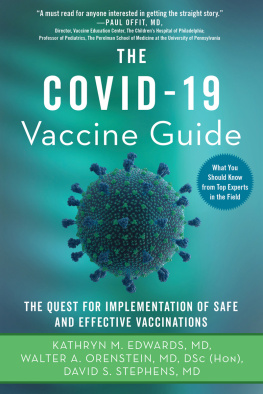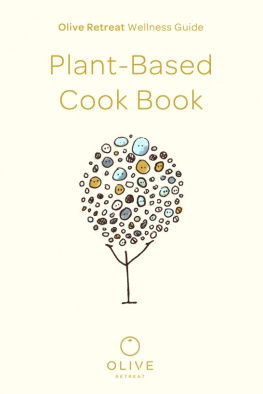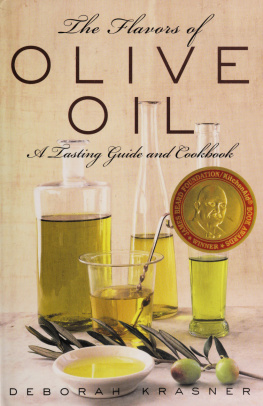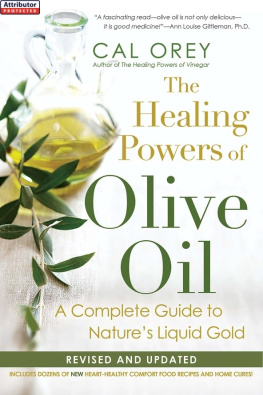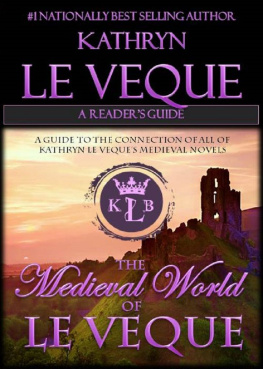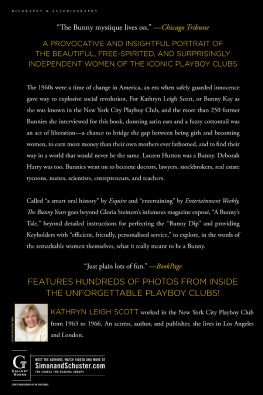Kathryn Cope - Study Guide for Book Clubs: Olive, Again
Here you can read online Kathryn Cope - Study Guide for Book Clubs: Olive, Again full text of the book (entire story) in english for free. Download pdf and epub, get meaning, cover and reviews about this ebook. year: 2020, publisher: Kathryn Cope, genre: Non-fiction. Description of the work, (preface) as well as reviews are available. Best literature library LitArk.com created for fans of good reading and offers a wide selection of genres:
Romance novel
Science fiction
Adventure
Detective
Science
History
Home and family
Prose
Art
Politics
Computer
Non-fiction
Religion
Business
Children
Humor
Choose a favorite category and find really read worthwhile books. Enjoy immersion in the world of imagination, feel the emotions of the characters or learn something new for yourself, make an fascinating discovery.
- Book:Study Guide for Book Clubs: Olive, Again
- Author:
- Publisher:Kathryn Cope
- Genre:
- Year:2020
- Rating:3 / 5
- Favourites:Add to favourites
- Your mark:
- 60
- 1
- 2
- 3
- 4
- 5
Study Guide for Book Clubs: Olive, Again: summary, description and annotation
We offer to read an annotation, description, summary or preface (depends on what the author of the book "Study Guide for Book Clubs: Olive, Again" wrote himself). If you haven't found the necessary information about the book — write in the comments, we will try to find it.
Study Guide for Book Clubs: Olive, Again — read online for free the complete book (whole text) full work
Below is the text of the book, divided by pages. System saving the place of the last page read, allows you to conveniently read the book "Study Guide for Book Clubs: Olive, Again" online for free, without having to search again every time where you left off. Put a bookmark, and you can go to the page where you finished reading at any time.
Font size:
Interval:
Bookmark:
Study Guide for Book Clubs: Olive, Again
Study Guides for Book Clubs, Volume 42
Kathryn Cope
Published by Kathryn Cope, 2020.
While every precaution has been taken in the preparation of this book, the publisher assumes no responsibility for errors or omissions, or for damages resulting from the use of the information contained herein.
STUDY GUIDE FOR BOOK CLUBS: OLIVE, AGAIN
First edition. February 26, 2020.
Copyright 2020 Kathryn Cope.
ISBN: 978-1393118480
Written by Kathryn Cope.
10 9 8 7 6 5 4 3 2 1
 |  |


T here are few things more rewarding than getting together with a group of like-minded people and discussing a good book. Book club meetings, at their best, are vibrant, passionate affairs. Each member will bring along a different perspective and ideally there will be heated debate.
Nevertheless, a surprising number of book club members report that their meetings have been a disappointment. Even when their group enjoyed the book in question, they could think of astonishingly little to say about it and soon wandered off-topic altogether. Failing to find interesting discussion angles for a book is the single most common reason for book group meetings to fall flat. Most groups only meet once a month, and a lacklustre meeting is frustrating for everyone.
Study Guides for Book Clubs were born out of a passion for reading groups. Packed with information, they take the hard work out of preparing for a meeting and ensure that your book group discussions never run dry. How you choose to use the guides is entirely up to you. The author biography and style sections provide useful background information which may be worthwhile to share with your group early on. The all-important list of discussion questions, which will probably form the core of your meeting, can be found towards the end of this guide. To support your responses to the discussion questions, you will find it helpful to refer to the Themes, and Character sections.
A detailed plot synopsis is provided as an aide-memoire to recap on the finer points of the story. There is also a quick quiza fun way to test your knowledge and bring your discussion to a close. Finally, if this was a book that you enjoyed, the guide concludes with a list of further reads similar in style or subject matter.
This guide contains spoilers. Please do not be tempted to read it before you have finished the original novel as plot surprises will be well and truly ruined.
Kathryn Cope, 2020
 |  |


L ife
Elizabeth Strout is an American novelist and short-story writer. Born in 1956, she was raised in a remote part of Portland, Maine. Her father was a scientist, and her mother taught English.
Following her graduation from a liberal arts college, Strout went on to law school. After practising as an awful, awful lawyer for six months, however, she returned to her first lovewriting. Her reputation slowly grew with the publication of a number of short stories until her first novel was published in 1998. She finally became a household name with the release of Olive Kitteridge in 2008 which won the Pulitzer Prize for fiction.
Strout divides her time between Manhattan and Maine. She married her second husband, Jim Tierney, after meeting him at one of her book events. Her daughter, Zarina, is a playwright.
Work
While Strouts novels vary in subject matter, they have certain elements in common. Most are set in small New England towns and explore similar themes: family dynamics; loneliness; prejudice; class divisions, and the difficulty of truly connecting with others. As a writer, Strout is essentially interested in character and her great strength is a resistance of sentimentality. Her novels realistically portray the nature of human experience through flawed, authentic characters. In her own words, It is not good or bad that interests me as a writer, but the murkiness of human experience and consistent imperfections of our lives.
Amy and Isabelle (1998)
In Strouts first novel, the eponymous daughter and mother share a stifling love-hate relationship. When sixteen-year-old Amy is caught having sex with her teacher in a car, tensions with her mother come to a head. The crisis forces Isabelle to face her two worst fears: the gossip of the residents of Shirley Falls and the shameful secrets of her past.
Abide with Me (2006)
Strouts second novel focuses on Reverend Tyler Caskey, a minister in a small New England town in the 1950s. The story follows the ministers life after the tragic death of his young wife. While he continues to listen to the woes of his parishioners, he privately struggles to cope with his own grief and loss of faith.
Olive Kitteridge (2008)
Strouts Pulitzer Prize-winning novel consists of thirteen short stories, all set in the same New England town. In each chapter, readers are privy to the thought processes of one of the residents of Crosby. Running through all these accounts (sometimes as a protagonist and sometimes mentioned only as an aside) is Olive Kitteridge, notorious for her blunt, abrasive manner. By gradually revealing the desires and emotions concealed by Olive beneath her brusque exterior, Strout presents a poignant portrait of a woman who feels love and compassion but finds it difficult to express them. Following the great success of this novel, it was adapted into an Emmy-winning TV series starring Frances McDormand.
The Burgess Boys (2013)
As boys, Jim and Bob Burgess witness their fathers deatha tragedy for which Bob believes he is responsible. Later, eager to escape their hometown of Shirley Falls in Maine, both brothers become lawyers in New York. While confident Jim becomes a wealthy corporate lawyer, the more compassionate Bob works as a legal aid attorney. The brothers find their lives disrupted when they are contacted by their sister, Susan, who begs for their professional help after her teenage son commits a shocking hate crime. As they return to Shirley Falls to do what they can for their nephew, the brothers find that buried tensions and resentments soon erupt between them.
My Name is Lucy Barton (2016)
In this critically acclaimed novel, the eponymous protagonist describes a nine-week period spent in hospital. Isolated and pining for her two daughters, Lucy Barton is astonished when her estranged mother makes the long journey to New York to visit her, staying for five days and nights. During her visit, they talk about the lives of women from their hometown of Amgash, Illinois. While these conversations seem to bring mother and daughter closer together, they also circle around the many things that are unsayable about their family history, which, Lucy slowly reveals, involves poverty, neglect and abuse.
Font size:
Interval:
Bookmark:
Similar books «Study Guide for Book Clubs: Olive, Again»
Look at similar books to Study Guide for Book Clubs: Olive, Again. We have selected literature similar in name and meaning in the hope of providing readers with more options to find new, interesting, not yet read works.
Discussion, reviews of the book Study Guide for Book Clubs: Olive, Again and just readers' own opinions. Leave your comments, write what you think about the work, its meaning or the main characters. Specify what exactly you liked and what you didn't like, and why you think so.

